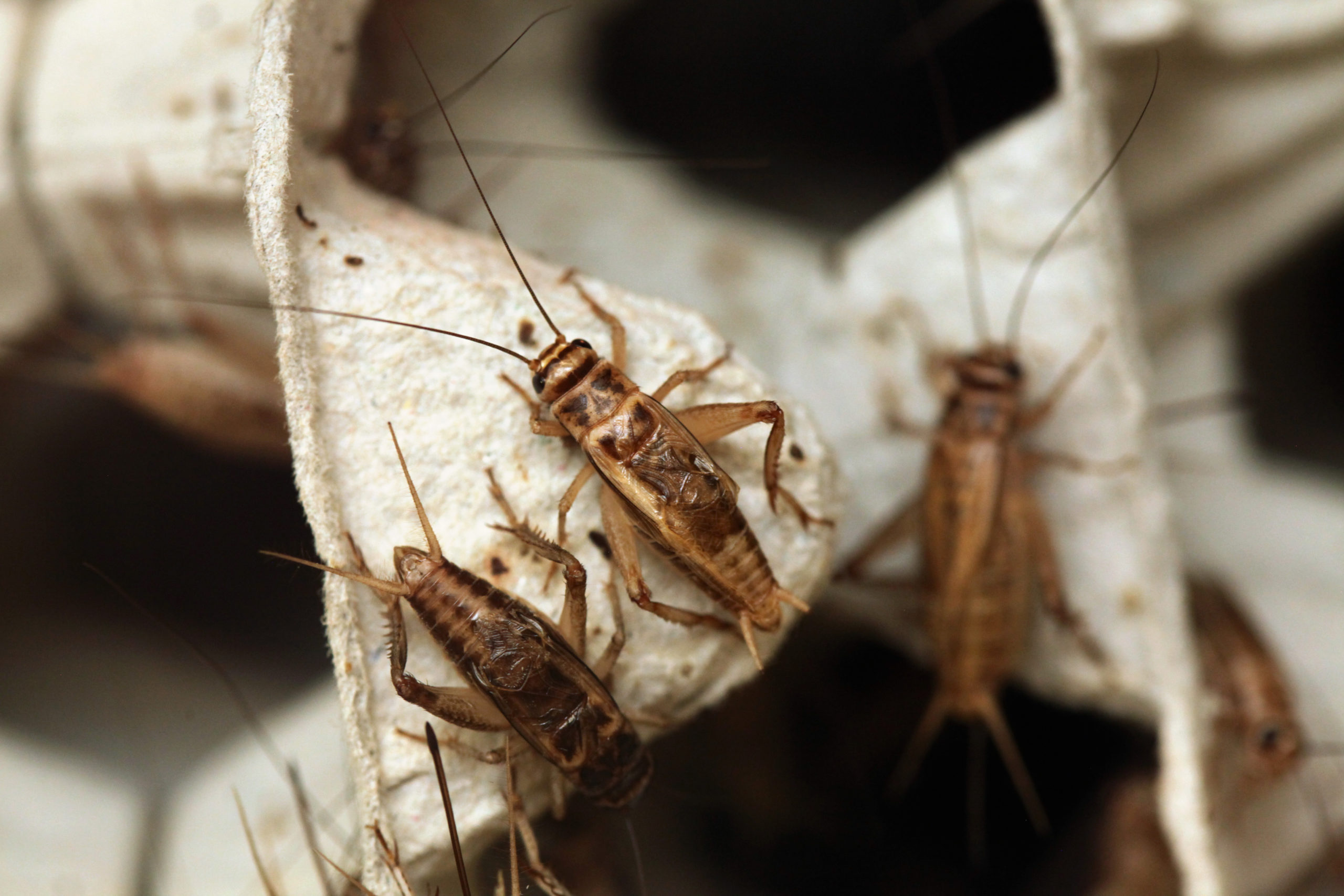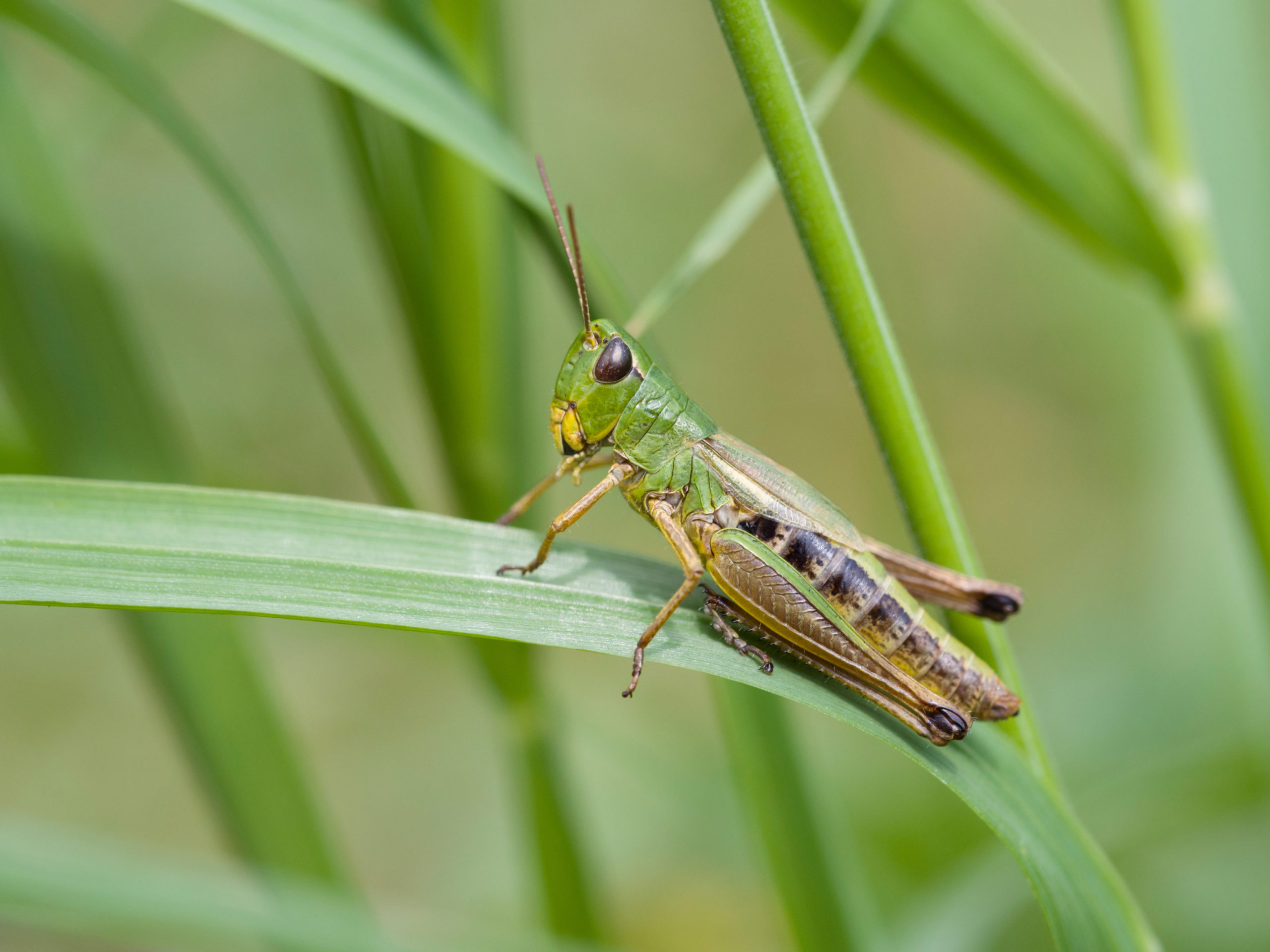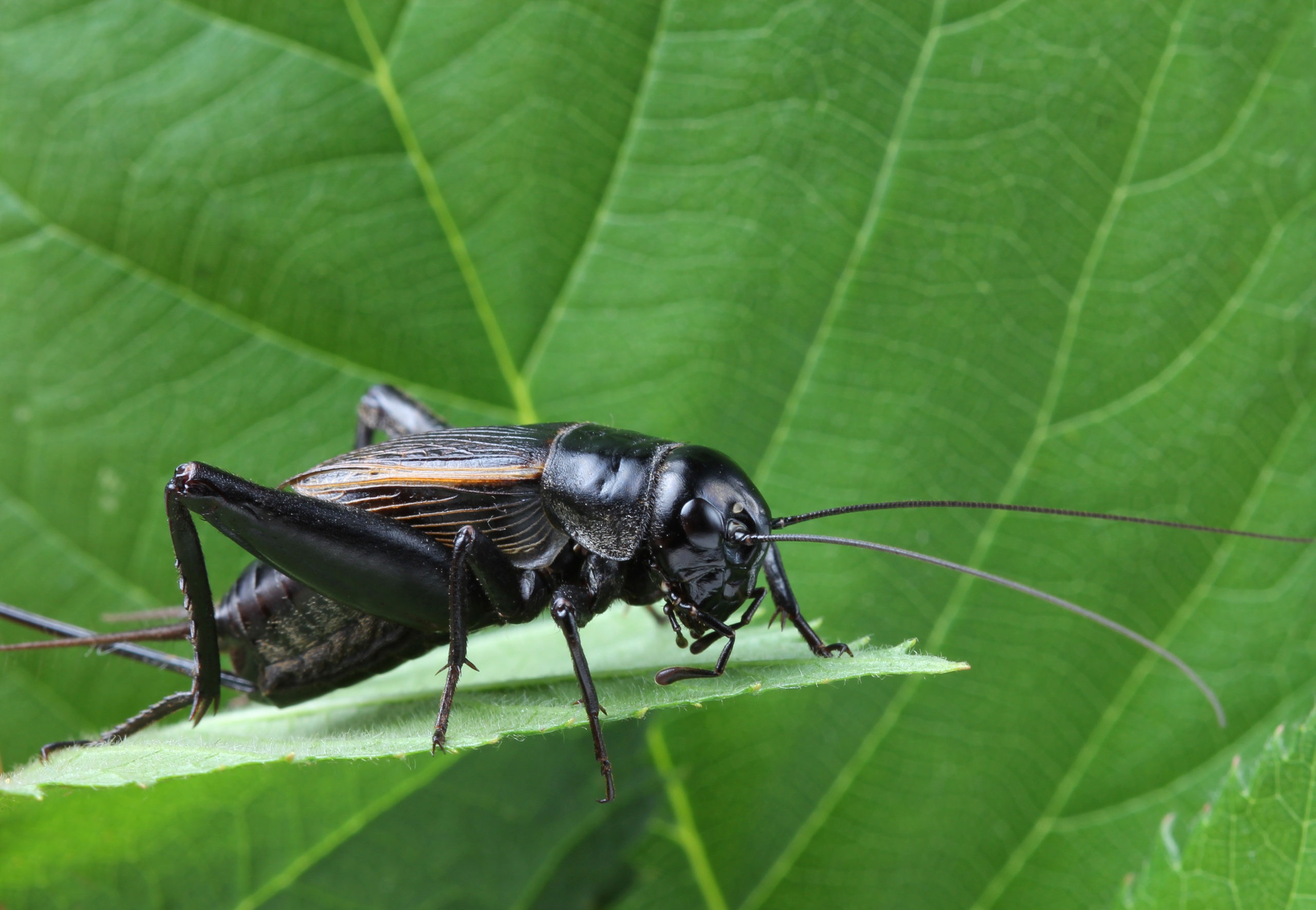Crickets vs. Grasshoppers: Are They Really That Different?
Crickets vs. Grasshoppers: Are They Really That Different?
One of the classic pair of insects that seem too similar to be totally separate is the cricket and the grasshopper. These insects are characterized by their long legs that are bent when not in use, as well as their impressive jumping abilities and voracious appetites for plants. While grasshoppers and crickets are in the same Order (Orthoptera), they are definitely their own insects with distinct preferences and habits. Before discussing the list of important similarities between the two, let’s look at each insect separately to gain an understanding of these hop-happy creatures.
Chirp-Happy Crickets

First up: crickets. Unfortunately, real crickets don’t carry an umbrella and offer sage advice while wearing a pretty iconic top hat like Jiminy. They mainly jump to get around, as their average distance is an impressive 3 feet long. Most crickets don’t have wings, so jumping is the only option for many of them anyway. Crickets can be up to two inches long and either brown or pale green in color (maybe they are like Jiminy!). They are easily distinguished by their long antennae that are about the length of their bodies. Crickets use their antennae to feel their surroundings and fight other crickets; male crickets specifically fight each other to see who will pair up with a female. They also hear through organs in their front legs, which has often been simplified to mean that they hear through their knees. There are about 2,400 species of crickets in existence, which is good for them since they only live about 8 to 10 weeks.
One thing to note about crickets is that they are nocturnal, which you probably already knew based on their favorite pastime. Crickets chirp primarily for mating reasons, such as finding a mate in the first place, and only males chirp. This sound is made by the cricket rubbing its legs together, which is a process known as stridulation. The chirping sound is faster in hot weather since insects are ectothermic, meaning their body temperature and energy level is affected by the outside environment. An old popular rumor said that we can tell the exact temperature by measuring the amount of time between cricket chirps. There are various formulas online, so it’s hard to say which one is actually correct. But this is not the most reliable way to tell the temperature anyway, as a cricket’s chirp rate depends on its age, health, diet, and other physical factors that don’t relate to weather. So while it is a fun way to pass the time in the summer, we recommend sticking to a thermometer or the Internet to tell the temperature.
As for their diet, crickets are omnivores. They are natural scavengers, meaning they are experts at finding food in all kinds of places. Crickets eat all kinds of organic matter like plants, fruit, larvae, and small insects. They can be considered beneficial when they turn to decaying plant matter for food, as it helps our plants thrive and remain healthy. But crickets can be very destructive when their population isn’t kept in check, especially if there are more readily-available healthy plants than decaying ones for their food. This is why female crickets actually hide their eggs; males are known to destroy the eggs if they have access to them!
Knee High to a Grasshopper

Grasshoppers are a little more intimidating than crickets due to their size and relation to their sub-species of locust, which are often associated with massive plagues. Grasshoppers also jump quite a bit, with an average distance of 2.6 feet, but they can also fly. They are the perfect natural shade of brownish-green to blend in with grass and trees, which is why they go undetected for so long in the summer. Grasshoppers can be up to four inches long, about double the length of crickets. There are 11,000 species of grasshoppers, which is far too many for a world that relies on the health and production of its crops.
Grasshoppers are diurnal, meaning they are active during the day and sleep at night. This is why it’s far more possible to find a random grasshopper than a cricket when walking through the lawn. They lay their eggs in soil to protect the new generation of grasshoppers from the predators lurking outside. Grasshoppers also live much longer than crickets, since their lifespan is about one year. This is also why there seems to be a ton of grasshoppers every year; the same generation can span two crop-growing-seasons. They also have a strange way of hearing, since their hearing organs are in their abdomens!
Grasshoppers are herbivores, so they don’t partake in the eating of other insects like their smaller brethren. They primarily eat stems, flowers, grass, and leaves, which are all bad news for anyone who cares about their landscaping. One more fact to note about grasshoppers is that they also chirp, but in a different way. Grasshoppers rub their hind legs against their wings, which produces a buzz rather than a chirp. They also use this sound to attract mates and guard their home, but it’s arguably not as memorable as a cricket chirp.
The Same But Different

Now that we have the basics, it’s time to point out some of the similarities between crickets and grasshoppers. As we mentioned earlier, they belong to the same Order of Orthoptera. This group of insects is known for their four wings and strong hind legs that give them the ability to jump. But these two insects have more specific similarities. They have wide back wings and long front wings, which are quite useful for flying long distances to the next crop (for those crickets who do have wings). Both crickets and grasshoppers also have strong mouthparts, which is how they are able to chow down on our plants and crops so easily.
These two insects also have very similar habitats. Both like to stay in grassy areas with lots of foliage that is largely untouched by humans and other large predators. This is why they are mostly found in meadows, grassland, and forests. They can also be found in large areas of grass, like a home with lots of land or a baseball field, but those are riskier since the threat of a lawnmower always looms large. But since both insects lay their eggs and find their food in these areas, it makes sense that they would share a space.
There are other smaller similarities between these two that show how alike they are despite being in separate families, genus, and species. Both crickets and grasshoppers go through three life stages: egg, nymph, and adult. They lay their eggs in safe soil, grow into nymphs that look like mini versions of the adults, and then become full-grown insects. This is also why they are such big problems for plants, since they start eating our crops from a young age. And even though their sounds are different, they have one strange fact in common. Male crickets and grasshoppers chirp far more than females. Female crickets can’t chirp even if they wanted to, but female grasshoppers don’t seem to utilize this skill much either. It is probably just as well, since the amount of chirping and buzzing insects we already have is quite enough for one planet.
Pest Control is a Plant-Saver!

These insects certainly have their differences and serve various purposes in the ecosystem, but one thing is for sure: they both love to eat our plants! Crickets are a little more helpful since they also eat smaller garden pests, but both grasshoppers and crickets can do some real damage to a garden. We understand that many chemicals in traditional pesticides are a bit too harsh on our plants, which kind of defeats the purpose of protecting them. That is why our treatments only use EPA-approved, eco-friendly products that prevent pests without harming your plants and garden. Contact us today to learn more about our services and how our team of experienced technicians can provide you with the pest-free yard of your dreams so you won’t even have the chance to determine if those plant-eating fiends are crickets or grasshoppers.
Citations
AZ Animals Staff. Crickets vs. grasshoppers: 9 main differences revealed. AZ Animals. Available at https://a-z-animals.com/blog/crickets-vs-grasshoppers-9-main-differences-revealed/ (Accessed on July 21, 2022).
Hadley, D. (2018, May 7). The difference between grasshoppers and crickets. Thought Co. Available at https://www.thoughtco.com/difference-between-a-grasshopper-and-a-cricket-1968360 (Accessed on July 21, 2022).
Kidadl Team. (2021, November 11). Cricket vs. grasshopper: The different ways you can tell the two apart. Kidadl. Available at https://kidadl.com/facts/cricket-vs-grasshopper-the-different-ways-you-can-tell-the-two-apart (Accessed on July 21, 2022).
Watson, C. (2019, November 22). How to tell a cricket from a grasshopper. Sciencing. Available at https://sciencing.com/tell-male-female-crickets-7692270.html (Accessed on July 21, 2022).
Request a Free Quote Today
(We do not share your data with anybody, and only use it for its intended purpose)
